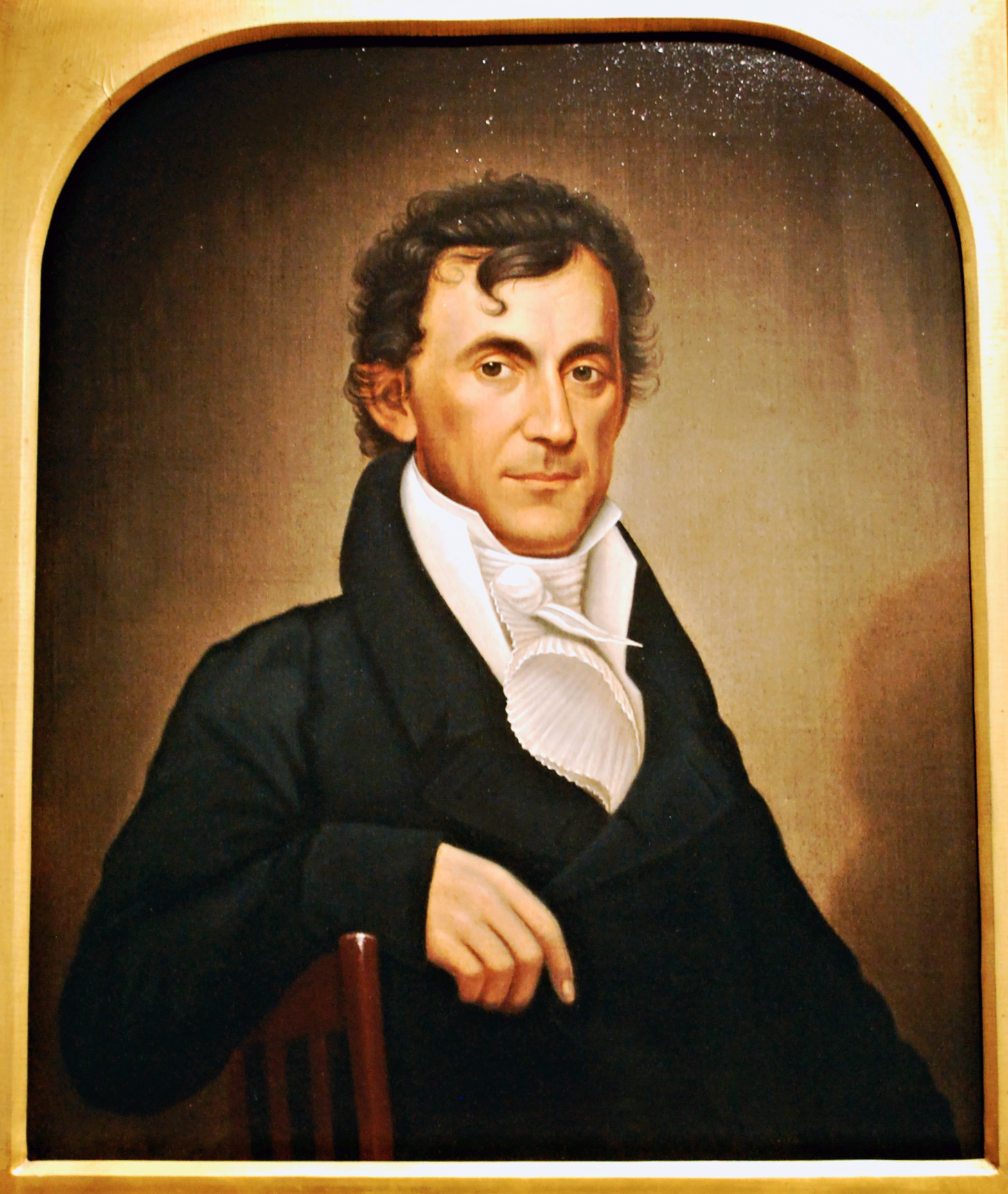Littleton Waller Tazewell
| Littleton Waller Tazewell | |
| Governor of Virginia | |
| In office | |
| 1834-1836 | |
| Preceded by | John Floyd |
| Succeeded by | Wyndham Robertson |
| U.S. Senator | |
| In office | |
| 1824-1832 | |
| Preceded by | John Taylor |
| Virginia General Assembly | |
| In office | |
| 1804-1806 | |
| U.S. Congress | |
| In office | |
| 1800-1801 | |
| Preceded by | John Marshall |
| Virginia House of Delegates | |
| In office | |
| 1798-1800, 1816-1817 | |
| Personal details | |
| Born | December 17, 1774 |
| Williamsburg, Virginia | |
| Died | May 6, 1860 |
| Norfolk, Virginia, Granby St. house | |
| Resting place | Family plot, Norfolk, Virginia |
| Alma mater | The College of William & Mary |
| Profession | lawyer, politician |
| Spouse(s) | Anne Stratton Nivison |
| Relatives | maternal grandfather of Littleton Waller Tazewell Bradford. |
Littleton Waller Tazewell was born on December 17, 1774 in Williamsburg, Virginia, to Henry Tazewell, a lawyer and future U.S. Senator, and Dorothea Elizabeth Waller. After his mother's death in 1777, Tazewell's father became immersed in revolutionary politics, leaving Tazewell to be raised by Dorothea's father, Benjamin Waller.[1] Waller, also a lawyer, tutored his grandson in Latin.[2]
At the age of ten, Tazewell attended Walker Maury's school in Williamsburg. While there, "he caught the eye" of George Wythe. For the next three years, Wythe acted as Tazewell's private tutor, teaching him Latin, Greek, and mathematics to prepare Tazewell for entering the College of William & Mary.[3] In 1791, Tazewell graduated from William & Mary with a B.A. degree, then traveled to Richmond to study law under John Wickham. After being accepted to the bar in 1796, Tazewell returned to Williamsburg to practice law.[4]
In 1798, Tazewell won a seat in the Virginia House of Delegates in part thanks to his father, who was now a U.S. Senator. He held this position for three consecutive terms (1798-1800). While there, Tazewell strongly supported James Madison's Virginia Resolutions against the Federalist Alien and Sedition Acts. After John Marshall was named Secretary of State, Tazewell filled Marshall's seat in the U.S. House of Representatives until the end of its session in 1801. Rather than seek another term, Tazewell moved to Norfolk where he married Anne Stratton Nivison. Together they would have seven children.[5]
Tazewell represented Norfolk in the Virginia Assembly from 1804 to 1806, where he worked to promote Norfolk's business community and fund state-authorized roads and canals.[6] A "Jeffersonian at heart" due to his "distrust of powerful men and strong government," Tazewell was more of a political independent; he consistently avoided party identification and detested partisan conflict. Tazewell had strong commercial interests and financial connections, attacked the United States' embargo policy, and advocated a Federalist-Republican coalition ticket over Madison's. In short, he supported policies and interests that conflicted with each U.S. party.[7]
In 1824, Tazewell was elected to the U.S. Senate to replace John Taylor.[8] He served as chair of the Senate's Foreign Relations Committee and as President Pro Tempore.[9] Tazewell did not support Andrew Jackson's presidency. In particular, he despised Jackson's handling of the 1832 Tariff Crisis and Jackson's decision in 1833 to withdraw public revenue from the U.S. Bank. Tazewell disgustedly left the Senate in 1832.[10]
In 1834, Tazewell was elected as Virginia's 26th Governor, where he would help Virginia recover $400,000 in settlement of Revolutionary War claims and work to put down "antislavery agitation by northern radicals." Tazewell retired from political life in 1836 to manage his plantations.[11]
Tazewell died of pneumonia at his Norfolk residence in 1860 and is buried in the family plot there.[12] His principal published work was Review of the Negotiations between the United States and Great Britain Respecting the Commerce of the Two Countries (1829).[13] He also composed a manuscript history of the Tazewell family in America, "An Account and History of the Tazewell Family," in 1823.[14]
See also
- Account and History of the Tazewell Family
- Discourse on the Life and Character of the Hon. Littleton Waller Tazewell
- John Wickham
- Wythe the Teacher
References
- ↑ American National Biography Online, s.v. "Tazewell, Littleton Waller," by John R. Van Atta, accessed October 5, 2015.
- ↑ "Littleton Waller Tazewell, Governor, U.S. Senator," GENi, accessed November 18, 2015.
- ↑ "Tazewell, Littleton Waller."
- ↑ Ibid.
- ↑ Ibid.
- ↑ Ibid.
- ↑ Ibid.
- ↑ "Littleton Waller Tazewell, Governor, U.S. Senator."
- ↑ "Tazewell, Littleton Waller."
- ↑ Ibid.
- ↑ Ibid; Kathryn R. Malone, "The Fate of Revolutionary Republicanism in Early National Virginia," Journal of the Early Republic, Vol. 7, No. 1 (Spring, 1987).
- ↑ "Tazewell, Littleton Waller."
- ↑ "Littleton Waller Tazewell, Governor, U.S. Senator."
- ↑ "An Account and History of the Tazewell Family" (1823), Special Collections Research Center, Swem Library, College of William and Mary.
Further Reading
- Hugh Blair Grigsby, Discourse on the Life and Character of the Hon. Littleton Waller Tazewell (1860).
